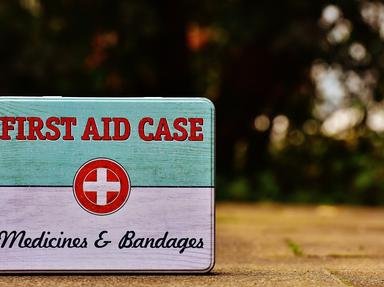Quiz Answer Key and Fun Facts
1. The acronym DVT stands for what?
2. Can you name the most common adult airway obstruction?
3. Which of the following is NOT classed as a solid organ?
4. The central nervous system (CNS) of humans is comprised of which two major structures?
5. Extreme flank pain and night sweats are common symptoms of which of these abdominal conditions?
6. Which blood group is generally considered to be the universal recipient?
7. The "ABCs" of basic life support stand for what?
8. Your patient with type-1 diabetes ate a full meal and did not take his or her insulin. You can expect their blood sugar level to be at what level?
9. Which of the following is NOT a symptom of serious carbon monoxide poisoning?
10. Minor bleeding is best controlled by which of these procedures?
Source: Author
stedman
This quiz was reviewed by FunTrivia editor
rossian before going online.
Any errors found in FunTrivia content are routinely corrected through our feedback system.
